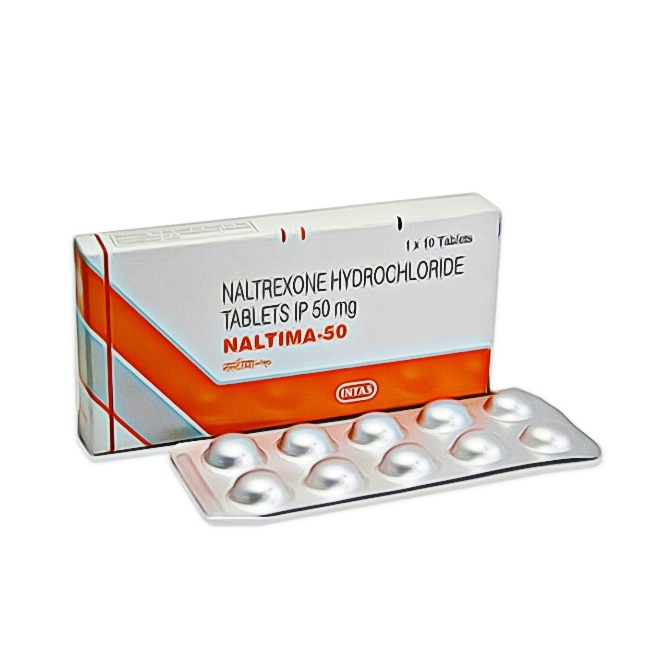Naltrexone for Pain
Addiction is one of the biggest problems people face worldwide, plaguing a whopping 15 million in the United States alone. Different people have their own vice they abuse, but the issues sweeping the nation revolve around opioid and alcohol use disorders. With so many people struggling with alcoholism, only 10 percent seek the right treatment.
Finding the right medication to help combat the cravings for alcohol and reverse the detrimental effects of opioids can be tricky, particularly since there is little-to-know media publicity surrounding it. Nonetheless, there is one prescription medication that can address these substance abuse issues: naltrexone.
Naltrexone is a powerful pain reliever that can mitigate the effects of heroin, morphine, and codeine. It removes the sedative and euphoric sensations by bonding with the body’s natural opioid receptors, which is what gives it the ability to block opioid cravings.
According to the National Institute on Alcohol Abuse and Alcoholism, there’s little-to-no risks of developing an addiction with naltrexone since it prevents mind flight, allowing users to take it without feeling high. Seeing as it is used to treat opioid or alcohol use disorders, it goes without saying that patients should avoid these substances while under medication.
It’s also recommended to consult with a substance misuse treatment practitioner when adjusting or changing the medication. Not to mention, taking naltrexone will make patients extremely sensitive to low doses of opioids, so taking the drug after the medication can lead to possible life-threatening overdose.
Opioid users also have the risk of experiencing sudden withdrawal symptoms, which is why it’s important to stop opioid intake for a minimum of seven to 10 days before proceeding with naltrexone to avoid going into withdrawal.
It’s also critical to share your medical history with your doctor, especially liver disease, kidney disease, or hemophilia. Naltrexone can also be prescribed to pregnant women, but it also requires further medical consultation since there is still confusion regarding the medication’s possible effects on the breast milk.
What is Naltrexone?
Naltrexone is a prescription medication that falls under the class of drugs such as opiate antagonists. It works by blocking opiate effects, along with reducing one’s dependence on opiates and alcohol.

It’s also approved by the Food and Drug Administration (FDA), which is popularly used for pharmacotherapy or medication-assisted treatment (MAT) for opioid and alcohol addiction. The program typically involves compliance monitoring, counseling, behavioral contract, lifestyle modifications, and other ways to restore a person’s sobriety.
Patients have the choice of taking it either as a pill or an injectable, though it will drastically impact the dosage and its usage frequency. The pill form is recognized as ReVia, Depade, which must be taken at the optimal dosage of 50 mg per day. On the other hand, the injectable form called Vivitrol must be administered by the healthcare provider using 380 mg once a month.
Naltrexone Side Effects
Naltrexone is highly effective, but keep in mind that any form of drugs comes with its unique risks, even prescription medications. That’s why it’s important to educate yourself on the possible side effects that can manifest throughout your usage, such as the following:
- Sleep Problems
- Exhaustion
- Lethargy
- Anxiety
- Headache
- Joint and Muscle Pains
- Abdominal Pain and Cramps
- Nausea
- Vomiting
The list above refers to the medication’s well-known side effects, though there are rare cases when these uncommon symptoms can occur:
- Energetic
- Loss of Appetite
- Thirst
- Diarrhea or Constipation
- Depression
- Irritability
- Dizziness
- Skin Rashes
- Decreased Potency and Delayed Ejaculation
- Chills
These adverse effects typically fade away several days after taking the medication. If these occur, there’s no need to panic and stop the medication since your health care provider can adjust the dosage to minimize the likelihood of triggering these symptoms.

Naloxone vs. Naltrexone
Many people interchange naloxone and naltrexone since both prescription medications are known to block opioid receptors, but there are key differences that can help in different stages of your recovery.
For one, naloxone is designed to treat opioid overdose cases, while naltrexone is for preventing recovering addicts from suffering a relapse. Opioid overdoses work by slowing down the breathing to a point of suffocation, but naloxone can effectively reverse the dangerous effects of opioid overdose within minutes.
It comes either as a nasal spray or an injectable, but the nasal spray version is accessible in any over-the-counter pharmaceuticals with no prescription necessary. Just like naltrexone, it does not cause high-like sensations nor does it trigger a person’s dependency on drugs.
The Bottom Line: Understanding how Naltrexone Works and its Side Effects
Naltrexone is a life-saving medication that can do wonders in helping opioid and alcohol abusers break free from their addiction, but people undergoing this treatment program will need solid emotional and practical support.
Most naltrexone users will need a professional to supervise the dosage throughout the treatment. Attending family counselling also helps recovering addicts to ease back into their everyday life as they move forward from their disorder. With that in mind, his guide is written to help individuals, family, or friends finding effective medical options for treating substance abuse and alcohol addiction.
Source:
https://pubs.niaaa.nih.gov/publications/combine/FAQs.htm
















